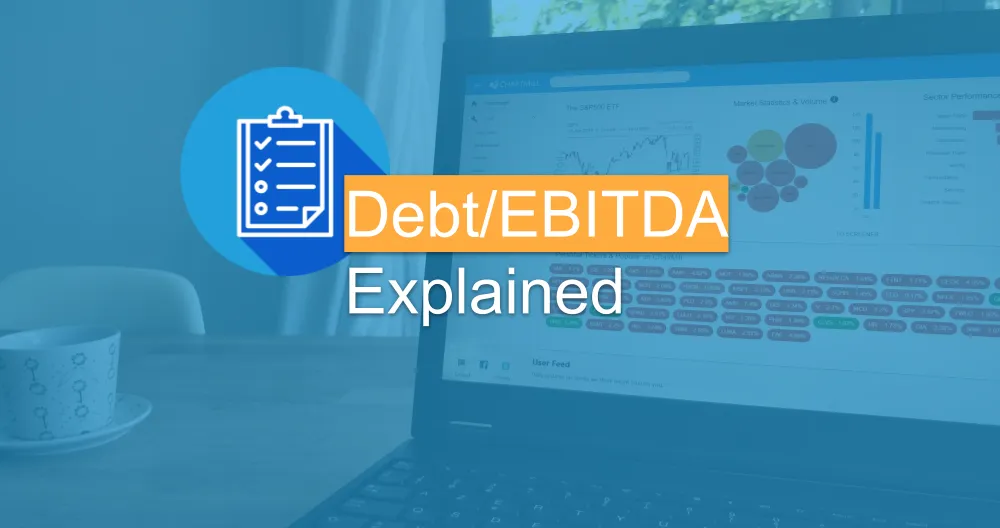Debt to Equity Ratio: Achieving Financial Balance
By Kristoff De Turck - reviewed by Aldwin Keppens
~ 3 minutes read - Last update: Apr 19, 2024
The debt-to-equity ratio is a financial measure that provides insight into a company's capital structure. It is calculated by dividing a company's total liabilities (debt) by its total equity. The ratio shows the relationship between creditor financing and shareholder financing.
Understanding The Calculation
Use the following formula to calculate the ratio of debt to equity:
Debt to equity ratio = total debt/total shareholders' equity.
Where:
Total Debt, Consisting Of:
Current Liabilities: These are obligations that are expected to be settled within a short period, usually within one year or the operating cycle of the business, whichever is longer. Examples include:
- Accounts Payable: Amounts owed to suppliers for goods or services.
- Short-Term Loans: Debt that needs to be repaid within a year.
- Accrued Liabilities: Expenses that have been incurred but not yet paid, such as wages and taxes.
- Unearned Revenue: Payments received in advance for goods or services that have not been delivered yet.
Long-Term Liabilities: These are obligations that are due to be settled beyond one year or the operating cycle. Examples include:
- Long-Term Loans: Debt with a repayment period extending beyond a year.
- Bonds Payable: Debt securities issued to raise funds from investors.
- Lease Obligations: Long-term leases for assets like property or equipment.
- Pension Liabilities: Obligations related to employee pension plans.
Total Shardeholders' Equity, Consisting Of:
- Common Stock: The value of shares issued to shareholders when they invest in the company.
- Retained Earnings: The cumulative total of the company's net income (profits) and losses from its inception that have not been distributed as dividends. Retained earnings reflect the reinvestment of profits into the business.
- Additional Paid-In Capital: The amount of capital that shareholders have invested in excess of the par value of the shares.
- Treasury Stock: If the company buys back its own shares, the value of these repurchased shares is subtracted from shareholders' equity.
- Accumulated Other Comprehensive Income: The cumulative total of gains and losses that are not included in the net income calculation, such as foreign currency translation adjustments or changes in the value of certain investments.
This ratio provides a numerical value, often expressed as a decimal number or percentage. A low debt ratio indicates a conservative financial structure, while a high ratio may indicate a riskier capital arrangement.
Meaning Of Debt-To-Equity Ratio.
The ratio provides insight into how much debt a company has relative to equity. A high level of debt capital can indicate higher risk because the company has obligations to pay interest and principal on debt, even if profits fall. Investors want to know if the company is financially stable enough to meet these obligations.
A higher debt ratio means a company is more dependent on borrowed money. While this can increase returns in prosperous times, it also increases financial risk in times of economic downturn.
A lower debt-to-equity ratio usually indicates better financial stability. Companies with a healthier balance between debt and equity are better able to survive in times of economic uncertainty.
In this way, the debt-to-equity ratio allows for meaningful comparisons between companies in the same industry. It provides a standardized measure for analysis of financial leverage between competitors.
Analyze Trends
It is not enough to analyze a single snapshot of the debt-to-equity ratio. Pay particular attention to the evolution of this ratio. Consistently rising ratios can be the harbinger of growing financial risk, while falling ratios point toward a more conservative approach.
The ideal D/E ratio
While there is no universal "ideal" ratio, it varies from industry to industry and business model to business model. However, a ratio of about 1:1 is generally considered healthy. This means that the company's total debt is approximately equal to its equity.
Factors Affecting The Debt-To-Equity Ratio.
Several factors influence a company's debt-to-equity ratio:
Industry Standards.
Different industries have different levels of acceptable debt. Some industries, such as utilities, tend to have higher ratios because of their capital-intensive nature. Therefore, it is important to compare only companies that are part of the same industry.
Life Cycle Of A Business
Start-up companies may have higher ratios because they seek financing to grow. This will be especially true for typical growth companies. Longer established and mature companies tend to have lower ratios.
Interest Rates
Fluctuations in interest rates can have a significant impact on financing costs. Companies with significant debt will suddenly have to spend more money on interest payments when interest rates rise sharply, which can have a significant impact on profitability and resources normally provided for other business activities.
FAQ
Can a low debt to equity ratio be problematic?
While a low ratio indicates conservative financing, it might also imply missed growth opportunities. Striking the right balance between debt and equity is essential for achieving sustainable growth.
Is a high debt to equity ratio always bad?
Not necessarily. A high ratio might indicate strategic leveraging to finance growth initiatives. However, it also increases the risk of financial distress if not managed carefully.
Are there industries where a higher ratio is acceptable?
Yes, capital-intensive industries such as industrials often have higher debt to equity ratios due to the nature of their operations and revenue streams.
How does the debt to equity ratio affect stockholders?
A higher debt to equity ratio can enhance returns for stockholders during periods of growth. However, it also exposes them to higher risks in case of economic downturns.
Related Articles
Total Debt to EBITDA
The Debt-to-EBITDA Ratio (Debt/EBITDA) stands as a measure of a company's financial leverage. It indicates how much debt a company carries concerning its Earnings Before Interest, Taxes, Depreciation, and Amortization (EBITDA). Read more...
Other Fundamental Health Filters
In this article we will discuss the available fundamental filters related to the Finanical Health of a stock. Read more...





